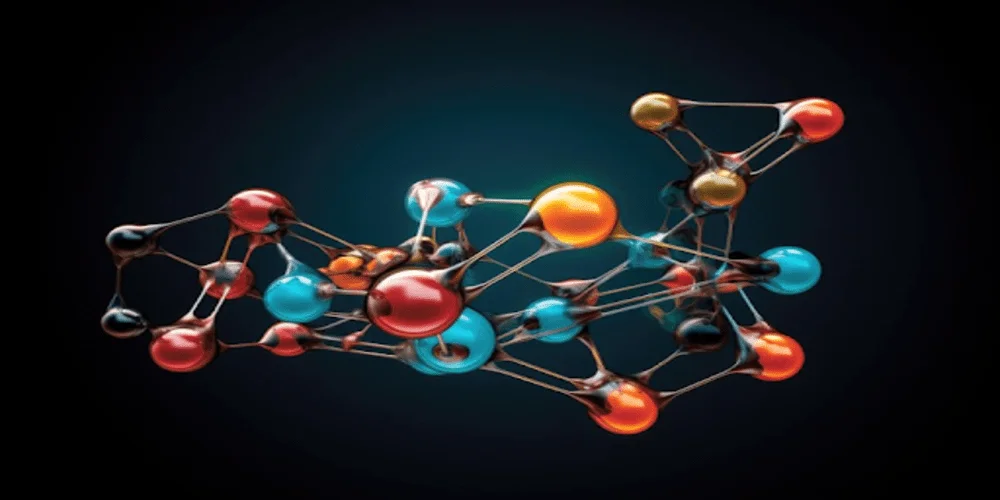The use of recombinant proteins has emerged at a greater level in the present scenario as they provide several health benefits and are being used extensively in the field of research and development. The Recombinant Protein Service has emerged a lot in various sectors and is a perfect and valuable tool for genetic engineering.
Recombinant proteins are produced using exogenous DNA rather than the native DNA of the host in the proper host system. Using an appropriate expression vector, the foreign DNA, also known as the gene of interest (GOI), is inserted into the host cells and uses the host genetic machinery to express itself as a protein.
Recombinant protein synthesis is currently one of the most potent methods employed in the biological sciences. Recombinant protein services have been extensively used in various sectors, including biotechnology, research, medicine, and other fields, because of their benefits, which include high purity, specificity, efficiency, safety, customization, scalability, and consistency.
Diverse Uses of Recombinant Proteins
Many therapeutic proteins that were initially isolated from natural sources can now be recombinantly generated in a variety of expression systems, such as bacterial, yeast, mammalian, and plant hosts, thanks to the development of recombinant DNA technology.
Through the use of genetic engineering techniques, therapeutic recombinant proteins can be created, which offer vital treatments for a range of illnesses, including diabetes, cancer, infectious diseases, autoimmune diseases, and genetic abnormalities.
The recombinant protein services are found in many areas that can be understood in detail as mentioned below.
Recombinant Cytokines and Growth Factors
Deficits in cytokines (which include interleukins, interferons, and colony-stimulating factors) are associated with some hereditary illnesses. Cytokines are signalling proteins that control immune responses and cell proliferation. To make up for these shortcomings, recombinant cytokines can be given. Recombinant erythropoietin (EPO) is used to treat anaemia and can increase the synthesis of red blood cells.
Immune checkpoint proteins, among other recombinant cytokines, contribute to immunotherapy by enhancing the immune system’s defences against specific cancer types. They can increase anti-tumor responses, elicit immunological cells, and boost the immune system.
Recombinant Hormones
Hormonal imbalances may result from genetic disorders. It is possible to create recombinant proteins to resemble hormones and restore regular physiological processes. As a part of the Recombinant Protein Service, diabetic patients are treated and managed with recombinant insulin. Children with growth abnormalities are treated with recombinant human growth hormone (rhGH).
Recombinant Enzymes
Due to genetic abnormalities, people with numerous genetic illnesses may not have any functional enzymes. It is possible to create recombinant enzymes that resemble absent or malfunctioning native enzymes. For Gaucher’s disease and Fabry’s disease, respectively, well-established enzyme replacement therapies (ERT) include recombinant glucocerebrosidase and recombinant alpha-galactosidase A.
Recombinant Vaccines
Recombinant proteins are designed to express particular antigens that are obtained from pathogens, which can be bacteria or viruses. These pathogens are highly immunogenic and can trigger a protective immune response. These recombinant antigens, which include surface proteins, subunits, and epitopes, are essential parts of several vaccination platforms, such as conjugate, virus-like particle (VLP), and protein subunit vaccines.
Compared to mRNA vaccines, recombinant protein vaccines exhibit a higher level of stability and a safe profile. Hepatitis B vaccines contain recombinant hepatitis B surface antigen (HBsAg). Recombinant virus-like particles are a component of human papillomavirus (HPV) vaccinations.
Drug Development
High-throughput screening tests employ recombinant proteins to find possible therapeutic candidates. Large compound libraries may be effectively tested against certain targets by researchers, which speeds up the drug discovery process.
Moreover, biological assays for examining the impact of possible treatment candidates are created using recombinant proteins. These recombinant proteins aid in the comprehension of the novel drug’s mode of action and the evaluation of its effectiveness in preclinical investigations.
Research Industry
Recombinant proteins have revolutionised the study and comprehension of cellular processes, including transcription, translation, protein modification, growth, replication, and death, metabolic processes, transcription, and cell signalling. They are crucial instruments in biological research.
Recombinant proteins make it possible for scientists to examine in a controlled setting the roles of particular genes and proteins. When it comes to protein purification, structural analysis, protein-protein interactions, receptor-ligand binding, and protein signalling pathways, recombinant proteins are an invaluable tool for researchers.
Optimal Health
Enzymes can be added to animal feed in the breeding business to boost the nutritional content of the feed ingredients, lower feed and waste management expenses, promote the health of the animal’s stomach, improve animal performance, and improve the environment. The food industry uses amylases to improve the flavour, sweetness, and texture of a variety of food products.
Cellulases are essential enzymes in the synthesis of biofuels, especially when it comes to converting lignocellulosic biomass into biofuels like bioethanol. The production of detergents depends heavily on proteases, which enhance the efficacy of laundry detergents and other cleaning supplies.
Bioengineering
By supplying bioactive elements that promote tissue development and cell proliferation, recombinant proteins advance the area of tissue engineering. Organ transplantation can go more quickly if they are designed to resemble natural tissues’ structural and signalling characteristics.
Biomaterials
Utilising recombinant proteins, functional biomaterials with specific characteristics including bioactivity, biocompatibility, and structural integrity can be designed and manufactured. These materials can imitate natural extracellular matrices by adding particular protein sequences, which can facilitate cell adhesion, proliferation, and tissue regeneration.
Medicinal Formulation
With the help of recombinant proteins, targeted medicines that are adapted to certain molecular targets or pathways can be developed, leading to better treatment outcomes and fewer side effects. Therapeutic proteins can be tailored using recombinant technology to meet the unique genetic variants that each patient possesses.
Recombinant Antibodies
Monoclonal antibodies (mAbs), in particular, have transformed the treatment of infectious diseases, autoimmune disorders, and several tumours. Rituximab is a commonly used CD20 monoclonal antibody for the treatment of lymphomas. Adalimumab (Humira) and trastuzumab (Herceptin) are utilised for treating autoimmune disorders such as rheumatoid arthritis and breast cancer, respectively.
Agriculture
Recombinant Protein have been used in agriculture for a variety of purposes. For instance, crops can be genetically modified to express proteins that provide resistance against pests, diseases (caused by bacteria, fungi, or viruses), or herbicides. This increases crop yield and quality as well as the sustainability of agriculture as a whole.
Conclusion
With the most effective method for producing recombinant proteins currently available, life science is clearly defined and has important uses in the three fields of biotechnology, research, and medicine. Recombinant protein services and production are primarily used for research purposes. This approach is favored due to its cost-effectiveness, straightforward techniques, and the ability to generate high-quality proteins quickly.



